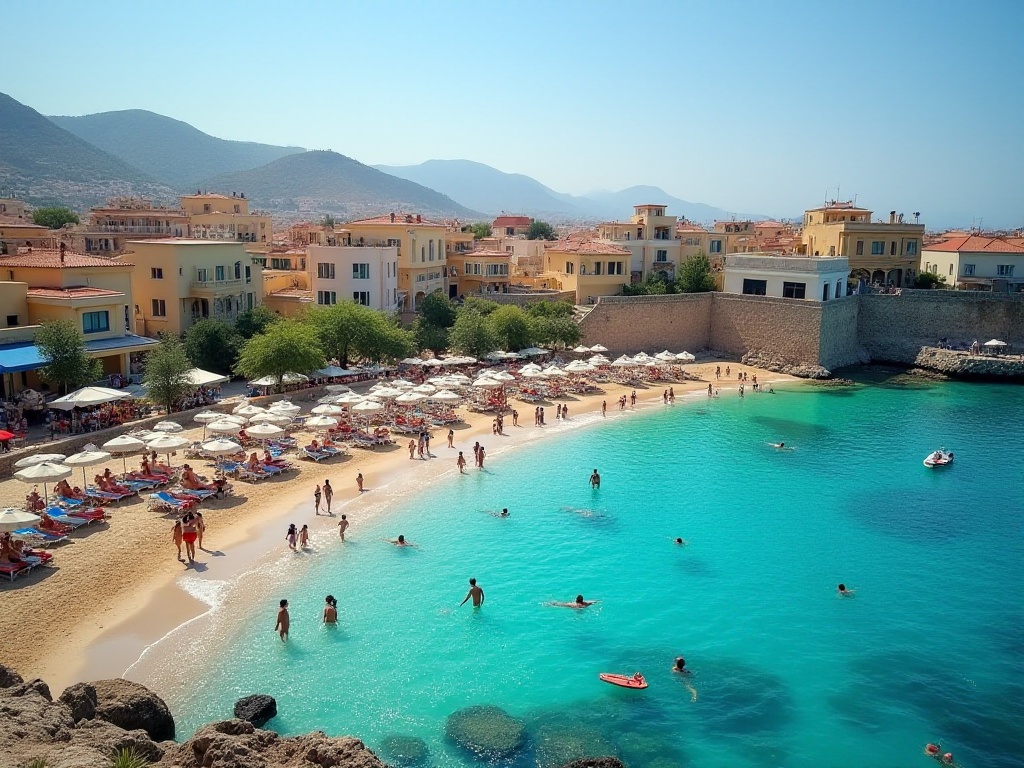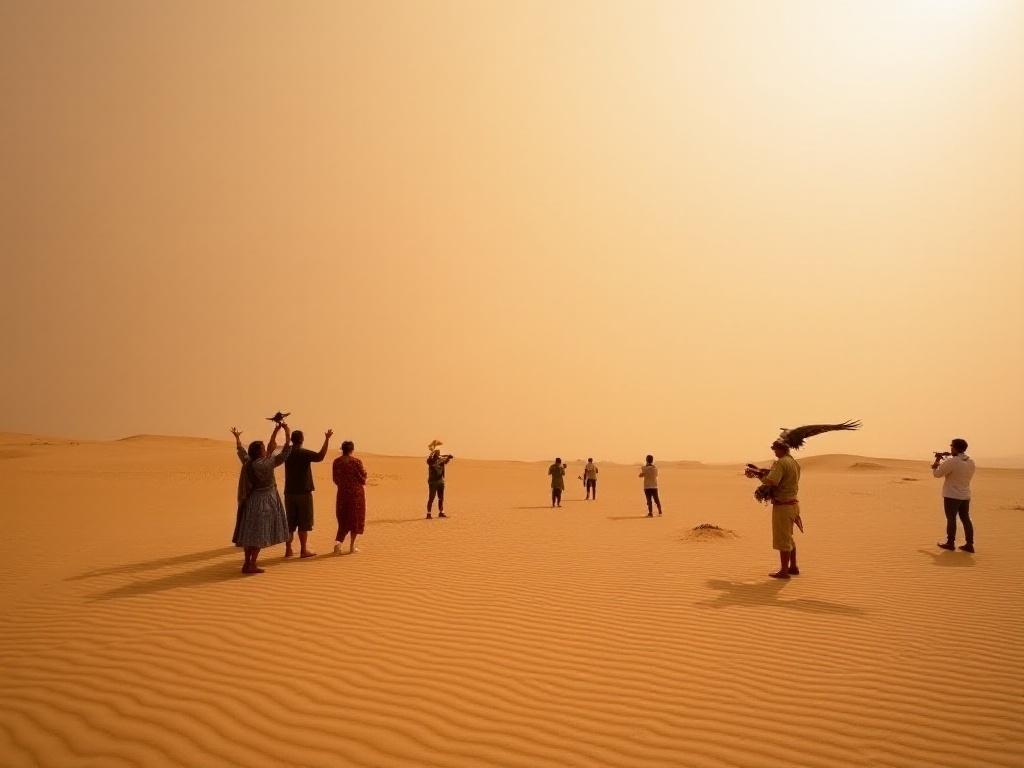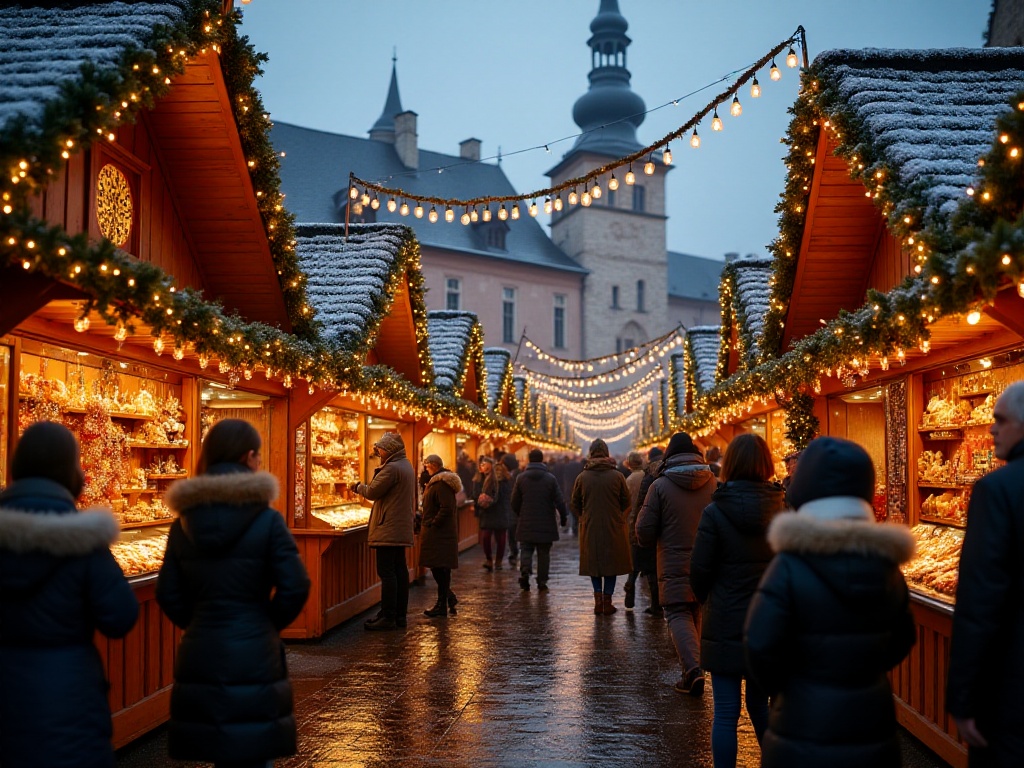Opening Chat
As a travel enthusiast who frequently moves between European countries, I always have endless things to say when I see people in my social circle asking "When is the best time to visit Europe?" Some recommend summer, citing good weather and mood; others suggest winter, feeling that Christmas markets have a great atmosphere. But actually, each season has its unique charm - the key is finding the time that suits you best. Today, I'll share with you the unique charms of Europe's four seasons based on my personal experience.
Peak Season Insights
Europe's peak tourist season is basically from May to September, especially during summer vacation when it's incredibly crowded. During this time, there's abundant sunshine, and due to the latitude, it's still bright at 9 PM, which is absolutely amazing. Last year in Stockholm, I could still see the sunset hanging in the sky at 10 PM, which completely stunned me. That feeling of "unnaturally long daylight" is truly magical.
However, peak season is truly "peak" - the crowds are suffocating. According to my collected data, the number of tourists in July and August can make you question life itself. Places like the Uffizi Gallery in Florence, Italy can squeeze in over 10,000 visitors daily during peak season, with queues long enough to make you lose faith. Last time I went, I stood in line for over 3 hours until my legs went numb. Once inside, it was still packed shoulder to shoulder, making it difficult to properly appreciate even a few famous paintings.
The prices are even more painful. Taking Paris as an example, hotel prices during peak season shoot up like a roller coaster, typically 40%-60% more expensive than off-season. I remember booking a hotel in Paris last summer, where a regular three-star hotel cost over 1,500 RMB per night, while the same room in winter might only cost seven or eight hundred.
Transportation is the same way, whether trains or planes, the prices are painfully expensive. A friend of mine paid over 200 euros for a train ticket from Paris to Amsterdam last summer, when it usually costs just over 100 euros. Plus, train tickets during peak season are often hard to get, making last-minute itinerary changes nearly impossible.
However, peak season isn't without its advantages. First, the weather is indeed nice, perfect for photos. The pictures I took at the Eiffel Tower in summer came out with beautiful blue skies and white clouds. Plus, summer in Europe is filled with outdoor cafes and street performers, giving the whole city a lively atmosphere.
Another benefit is that attractions have longer opening hours. Many museums and sites extend their operating hours, with some even offering night sessions. Last year at the Louvre in Paris, I caught the Friday night session and could browse the museum until 10 PM, which felt quite magical.

Shoulder Season Surprises
Honestly, my favorite times are April and October. Europe during these months is absolutely a travel paradise, with comfortable temperatures and fewer tourists, making it incredibly pleasant.
Last October when I was exploring the Tuscany region, it was a perfect travel experience. The vineyards had just finished harvesting, with golden vines everywhere and grape fragrance in the air. Temperatures stayed between 15-20 degrees, making countryside walks particularly enjoyable. Best of all, accommodation prices were 35% cheaper than in August, leaving more money for food and souvenirs.
However, shoulder season does have its minor issues, mainly unpredictable weather. You might start the day with bright sunshine and face rain in the afternoon. That's why I always carry a jacket now, just in case. Once in Prague, it was sunny in the morning but suddenly poured in the afternoon, leaving me completely drenched. Since then, I've learned it's better to carry extra clothing than be careless about weather.
Another advantage of shoulder season is experiencing different festivals. Events like the Dutch Tulip Festival in April and Oktoberfest in Germany are very special. When I attended Munich's Oktoberfest last year, the whole city was immersed in a festive atmosphere, with people wearing traditional clothes, drinking beer, and singing - that atmosphere was truly unforgettable.
Plus, flight prices during shoulder season are more reasonable. According to my research, flights are 20%-30% cheaper than peak season, with more flight options available. Hotels are even better value, with many four-star hotels potentially cheaper than three-star ones during peak season.

Off-Season Charms
Many people think Europe's off-season (November to March) is unbearably cold, but this is completely a misconception. While temperatures are indeed lower, this season has many unique charms.
First, prices are super friendly. Based on my experience, off-season airfares are generally 40% lower than peak season, and sometimes you can catch special deals. Hotel prices are unbelievably cheap - when I went to Barcelona in December two years ago, I stayed at a four-star hotel near Las Ramblas for just one-third of the peak season price. The money saved can go toward more souvenirs or better restaurants.
Second, attractions are particularly peaceful. The Louvre receives over 30,000 visitors daily during peak season, but in January, it's only about 8,000. This means you can appreciate the artwork at leisure without worrying about being pushed around by crowds. Last winter when I viewed the Mona Lisa at the Louvre, I could actually stand in the front row and take my time appreciating it - something impossible during peak season.
Europe in off-season has another special charm: various festivals. From late November, Europe starts decorating for Christmas, with lights and Christmas trees everywhere. German Christmas markets attract over 2 million tourists annually, with dazzling handicrafts and food. I particularly love the feeling of holding a cup of mulled wine in a snowy square while listening to Christmas carols - it's incredibly romantic.
Winter in Europe has another unique aspect: skiing. Ski resorts in Austria, Switzerland, and France welcome nearly 100,000 ski enthusiasts every weekend. When I went skiing in Zermatt, Switzerland last year, the feeling of traversing through the Alps was truly indescribable. Plus, the Alpine region in winter is perfect for photography, with snow-capped peaks against blue skies looking like postcards.
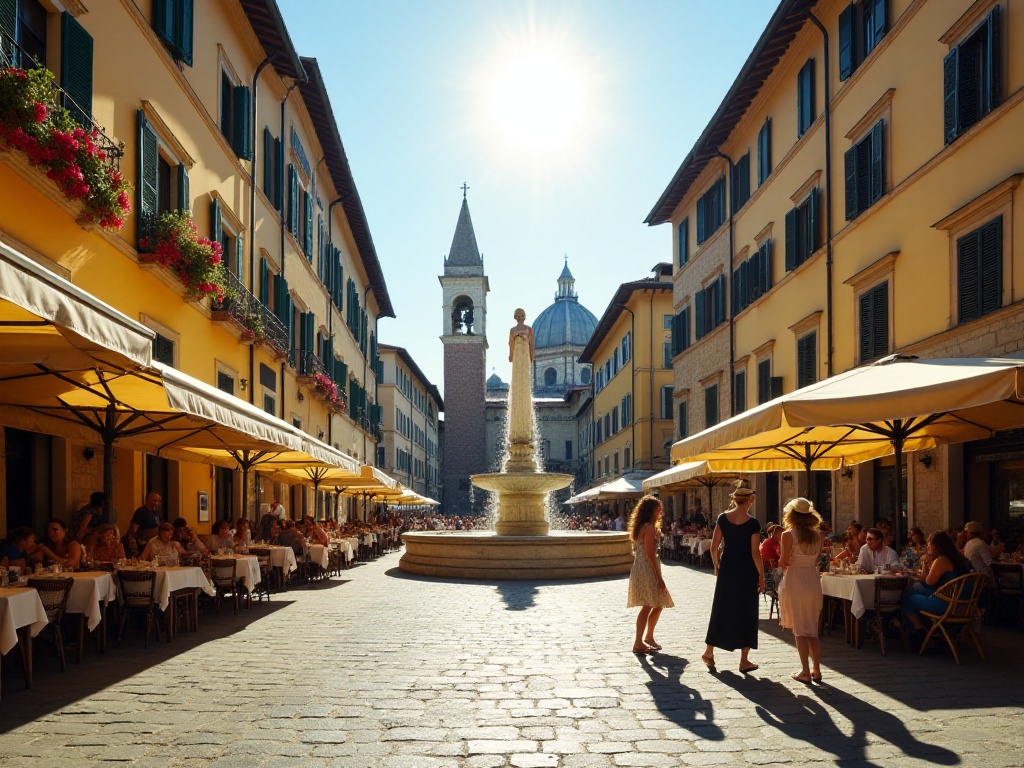
Seasonal Experiences
Spring in Europe is definitely my favorite. From March to May, all of Europe seems to be awakening. Parks are full of blooming flowers, trees along streets start budding, and the whole city is full of vitality. Last April, I saw 7 million tulips blooming at Keukenhof Gardens in Amsterdam - that overwhelming sight is truly indescribable.
Plus, there are relatively fewer tourists in spring, so many attractions don't have long queues. I remember visiting Notre-Dame Cathedral (before restoration) and only waiting about 20 minutes in line - during summer vacation, you couldn't get in without waiting at least an hour. The temperature is also comfortable, staying between 15-20 degrees during the day, slightly cooler in mornings and evenings, but a light jacket is enough.
Autumn in Europe has its unique beauty. From September to November, leaves start changing color, and all of Europe seems like God spilled his paint palette. Germany's Black Forest and France's Loire Valley become fairy-tale worlds of intertwined gold and red. Tourist numbers gradually decrease, with many places seeing daily visitor numbers drop by over 40% compared to August.
I particularly love strolling through European towns in autumn. Last year in Hallstatt, Austria, golden leaves reflected on the lake surface while the distant Alps had started accumulating snow - that peaceful atmosphere was particularly relaxing. Plus, autumn is harvest season in wine regions, with many wineries hosting tasting events where you can enjoy wine while appreciating the autumn colors.
While winter in Europe is cold, the festival atmosphere is particularly strong. From late November, cities start decorating, with Christmas lights and decorations everywhere. German Christmas markets are a must-experience, with various handicrafts, Christmas pastries, and mulled wine filling the entire city with holiday spirit.
Skiing is also a major winter feature in Europe. Austrian ski resorts welcome nearly 100,000 ski enthusiasts every weekend. The feeling of gliding through pristine snow is truly hard to describe in words. Plus, many ski resorts offer beginner courses, so you can try even without skiing experience.
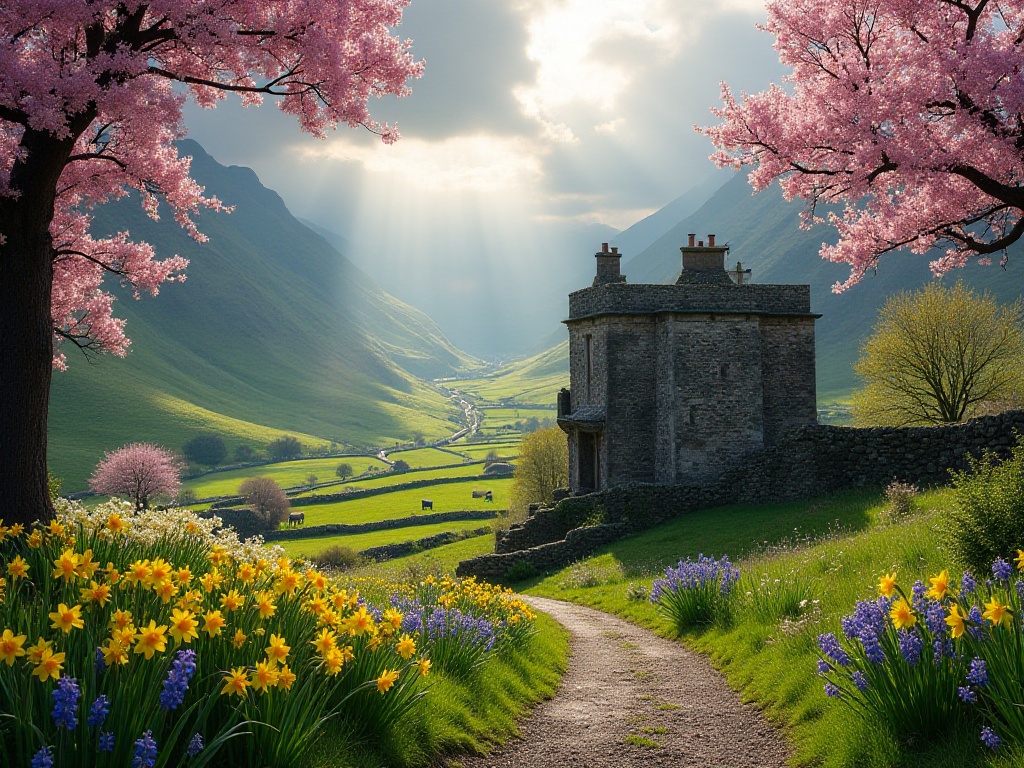
Final Thoughts
Honestly, choosing when to visit Europe really depends on personal preference. If you have a sufficient budget, don't mind crowds, and want to experience the liveliest atmosphere, peak season is indeed a good choice. If you care more about value for money and want a relatively relaxed travel experience, shoulder season might suit you better. And if you don't mind the cold and want to experience a different Europe, winter is also a great choice.
Each season in Europe has its unique charm - the key is finding the time that suits you best. No matter which season you ultimately choose, I believe if you experience it wholeheartedly, you'll gain an unforgettable travel experience.



